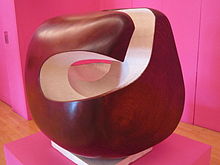Guarea
| Guarea | |
|---|---|

| |
| Scientific classification | |
| Kingdom: | Plantae |
| Clade: | Tracheophytes |
| Clade: | Angiosperms |
| Clade: | Eudicots |
| Clade: | Rosids |
| Order: | Sapindales |
| Family: | Meliaceae |
| Subfamily: | Melioideae |
| Genus: | Guarea F. Allam ex L. |
| Species | |
|
See text | |
Guarea is a genus of evergreen trees or shrubs in the family Meliaceae, native to tropical Africa and Central and South America. At their largest, they are large trees 20–45 m tall, with a trunk over 1 m diameter, often buttressed at the base. The leaves are pinnate, with 4–6 pairs of leaflets, the terminal leaflet present. They are dioecious, with male and female flowers on separate plants.[1] The flowers are produced in loose inflorescences, each flower small, with 4–5 yellowish petals. The fruit is a four or five-valved capsule, containing several seeds, each surrounded by a yellow-orange fleshy aril; the seeds are dispersed by hornbills and monkeys which eat the aril.
Species[]
Species accepted by Plants of the World Online as of March 2019:[2]
- Al.Rodr.
- T.D.Penn.
- C.DC.
- C.DC.
- Radlk.
- Guarea carapoides Harms
- Ducke
- Guarea cartaguenya Cuatrec.
- Guarea casimiriana Harms
- Guarea caulobotrys Cuatrec. (also spelt caulobotryis)
- Standl.
- Harms
- Al.Rodr.
- Guarea convergens T.D.Penn.
- Guarea corrugata Cuatrec.
- Al.Rodr.
- A.Juss.
- Guarea crispa T.D.Penn.
- Guarea cristata T.D.Penn.
- C.DC.
- W.Palacios
- Harms
- Harms
- W.Palacios
- Coronado
- Vahl
- Pulle
- T.D.Penn.
- T.D.Penn.
- Guarea guentheri Harms
- Guarea guidonia (L.) Sleumer
- C.DC.
- Guarea humaitensis T.D.Penn.
- Al.Rodr.
- Guarea jamaicensis Proctor
- Guarea juglandiformis T.D.Penn.
- A.Juss.
- Morales-P.
- C.DC.
- Al.Rodr.
- Vahl
- T.D.Penn.
- A.Juss.
- Coronado
- T.D.Penn. & S.A.Mori
- R.da Silva Ramalho, A.L.Pinheiro & T.D.Penn.
- W.Palacios
- Guarea polymera Little
- Harms
- (Rich.) A.Juss.
- C.DC.
- Guarea pyriformis T.D.Penn.
- T.D.Penn.
- Radlk.
- W.Palacios
- A.Juss.
- C.DC.
- Guarea sphenophylla Urb.
- Guarea sprucei C.DC.
- W.Palacios
- Al.Rodr.
- Al.Rodr.
- Gómez-Laur. & Valerio
- C.DC.
- Guarea trunciflora C.DC.
- Guarea velutina A.Juss.
- Guarea venenata T.D.Penn.
- Coronado
- T.D.Penn.
Uses[]
The timber is important; the African species are known as bossé, guarea, or pink mahogany, and the South American species as cramantee or American muskwood. It is said to possibly cause hallucinations if ingested.[3]
The bark of Guarea rusbyi (Britton) Rusby, a synonym of Guarea guidonia (L.) Sleumer,[4] is used as an expectorant[5] named cocillana.[6]

The wood can be used for sculpture and was favoured by the British 20th century sculptor Barbara Hepworth.[7]
References[]
- ^ Pennington, T. D.; Styles, B. T. (1975). "A Generic Monograph of the Meliaceae". Blumea. 22: 419–540.
- ^ "Guarea". Plants of the World Online. Royal Botanic Gardens Kews. 2017. Retrieved 17 March 2019.
- ^ "Scientists get dirt on mystery plant". STLtoday.com. 5 May 2009. Archived from the original on 16 June 2009. Retrieved 2009-05-07. External link in
|publisher=(help) - ^ "Guarea rusbyi". Germplasm Resources Information Network (GRIN). Agricultural Research Service (ARS), United States Department of Agriculture (USDA). Retrieved 24 December 2017.
- ^ Dr. Duke's Phytochemical and Ethnobotanical Databases[permanent dead link]
- ^ Ballard, C. W. (1922). "Histology of cocillana and substitute barks". Journal of the American Pharmaceutical Association. 11 (10): 781–787. doi:10.1002/jps.3080111004.
- ^ a b "Corinthos 1954–5". UK: Tate Gallery. Retrieved 5 August 2015.
- Guarea
- Meliaceae genera
- Medicinal plants
- Dioecious plants
- Meliaceae stubs